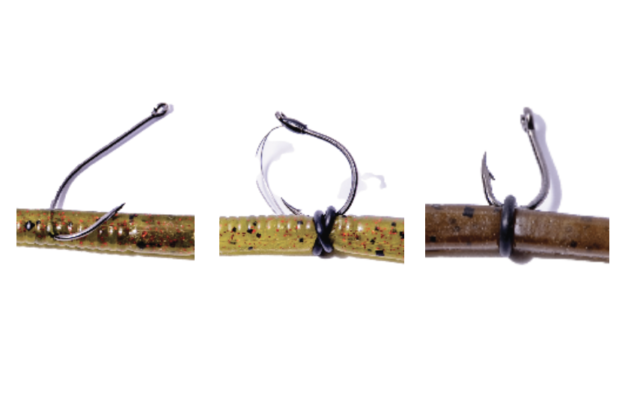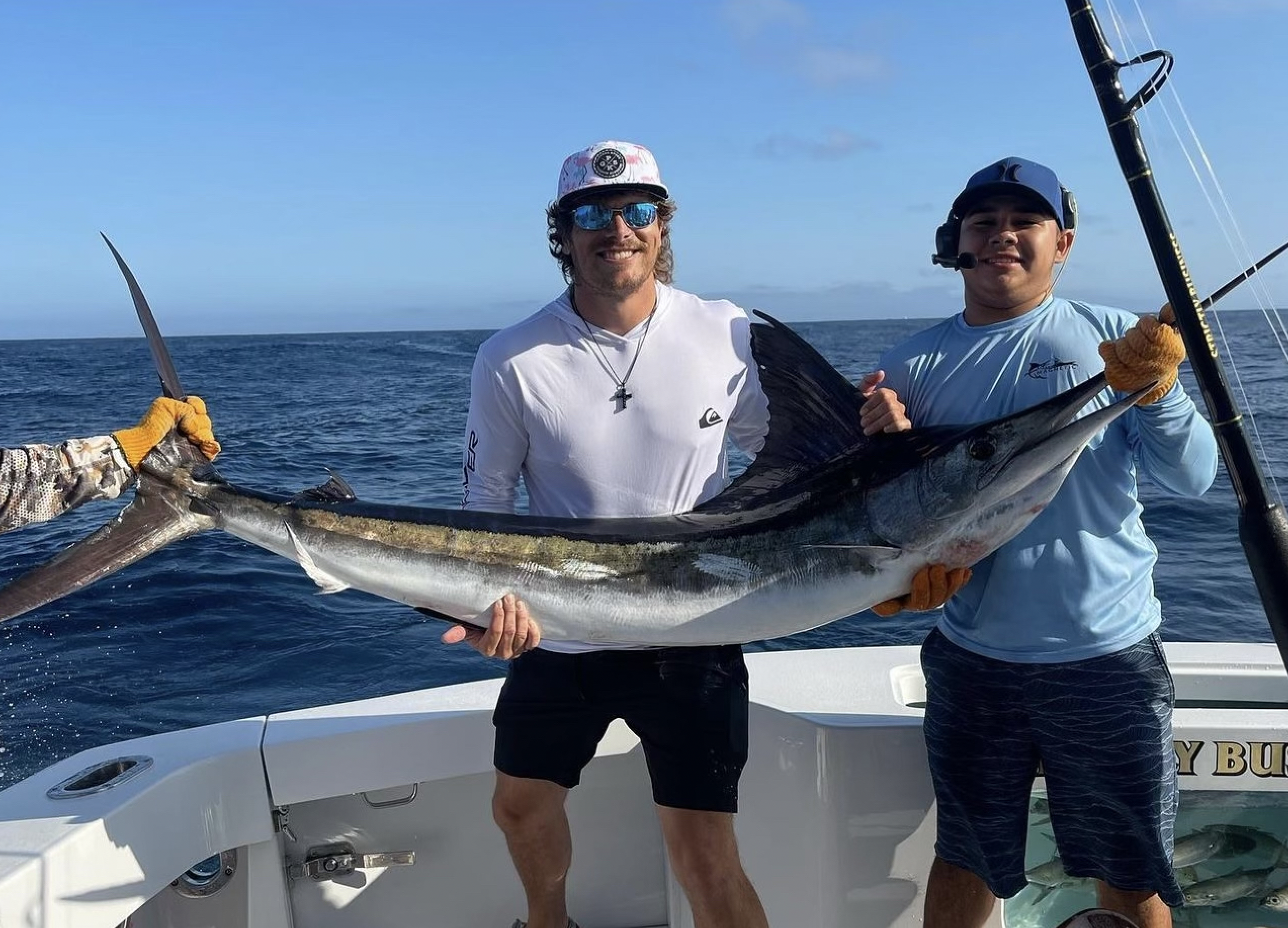by Terry Robertson
The arrival of spring brings longer days, warmer temperatures, green leaves, and high expectations for the bass anglers fishing before, during, and after the spawn. Spring bass fishing brings to mind the multitude of spinnerbaits, crankbaits, stickbaits, and topwater poppers. These are often considered top-choice baits for springtime bass, and most bass boats are stocked with several boxes full of each. The truth is, bass can be caught with many different baits, and with many different presentations and tactics. When it comes to springtime bass fishing, there is no one correct answer. Sometimes, multiple options coupled with the various stages of the spawn make for a tough decision. Though I’ve fished successfully with all of the above, when it comes to spring bass fishing I prefer to keep it simple and no bait or technique is more simple and successful than the wacky worm rig.
The wacky worm rig is truly a bait for all seasons, but to me, it really overshadows the others during the spring, and any other time the fish are finicky and the bites are hard to come by. The subtle fluttering, slow sinking action the weightless wacky rigged worm produces is hard for a bass to pass on.
What is a “wacky” worm rig?
Most of you have at least been exposed to the wacky rig. Many keep one rigged up and lying on the deck. For the rest, I’ll explain exactly what it is. First, there is no wrong way to rig the wacky worm. The wacky worm rig is basically a plastic worm or stickbait hooked in the middle with no added weight to the line or hook. Some anglers make it as simple as tying a 2/0 finesse hook to light line and hooking a 5-inch stick worm in the middle of its body which leaves both ends of the worm to dangle freely. Done. It’s ready to fish. As the worm makes its slow descent toward the bottom of the lake, the two ends flutter through the water presenting an action that is hard for a bass to refuse. The downfall with this simple rig is the need to replace worms often as they tear easily and don’t hold up well after a fight.
I prefer to add a step in the rigging process. I attach a 2/0 finesse hook to my line with a Palomar knot. Then, I use a wacky rigging tool to slide two 5/16” O-rings onto the body of the worm. Once centered on the worm, I roll one O-ring over the top of the other to form an X. I then thread the hook underneath the crossed section of the O-rings. The worm is attached perpendicular to the hook with only the pressure of the O-rings securing it to the hook. Upon the bite and hookset, the worm will often slide up the hook onto the line and therefore not become damaged. After landing the fish, it can be easily slid back into place and is ready to fish again. As I said earlier in the article, there is no wrong way to rig a wacky worm, therefore there can’t be a right way, either. This is merely my way.
Some anglers strongly believe that the use of O-rings or silicone tube reinforcers will negatively affect the action of the wacky worm and hinder a good hook set. I haven’t found this to be much of an issue, and I much prefer the use of these products to take advantage of the ability to use a worm for a longer period of time. The use of O-rings or a silicone tube will greatly extend the life of your plastic baits.
Wacky tackle
Everyone has their own ideas and preferences in this area. That’s the great thing about fishing. You can do it your way. No special equipment is required to successfully fish the wacky rig. Take into consideration the very light weight of this bait when choosing a rod. Generally speaking, fishing the wacky rig requires a rod with a soft tip to make accurate casts but also enough backbone to get a good hook set. I prefer fishing the wacky worm with a spinning rig, but many anglers successfully use a bait caster. A 7-foot medium-heavy rod equipped with a 3,000-size spinning reel is what I have used for years and is currently lying on the deck of my boat. It provides a soft tip for casting, enough backbone to get a good hook set, and the necessary strength to horse a big fish around and through obstacles to get it to the boat. The reel has a large enough spool and speed to allow me to catch up to a fish that bit the worm and is swimming toward the boat.
I spool my reel with 20-pound braid main line and tie on a 6-foot long, 10-pound fluorocarbon leader. This combination has worked well for me and should be a good starting place for you. You can change any or all components to fit your needs. Your imagination is the only limitation to the rigging options of this finesse rig.
Which worm you use is entirely up to you. I generally start with a 5” Yamamoto Senko, a Berkley Powerbait “The General”, a Zoom Trick worm, or any other stick-style worm in Green Pumpkin for cloudy days, June Bug Black for muddy water, or Watermelon Red for those days with bluebird skies. Don’t get too overwhelmed with colors. I like to keep my color selection as simple as the wacky rig itself.
How to fish the “wacky” worm rig
Whether a seasoned bass angler or a beginner, the wacky worm is very easy to fish and be productive with. It’s as easy as casting it to your target and letting it sink on a slack line. As the worm sinks, both free ends make a unique fluttering action that a bass finds difficult to refuse. Once your worm hits bottom, let it sit for a couple of seconds then give it a light pop or two, reel in your slack, and allow it to settle on bottom again. After a couple of these sequences your worm will be away from your target area so reel it in and cast it to your next target. Repeat the process until you get a bite. Keep moving from target to target and don’t waste time once your bait is away from the targeted structure.
Fishing this subtle finesse presentation many times can earn you a subtle bite that can go unnoticed if you aren’t paying attention. I keep one finger in contact with my line while the bait is in the water, and never take my eye off the line. Many times the bass will catch the bait on its initial fall in the water. Sometimes the angler will only notice that the bait stopped before reaching the bottom. The finger on the line will allow you to feel a subtle bite that might not show on the rod tip. Also, many times the light bite on the slack line is followed by the fish swimming off with your bait in its mouth. If you fail to watch the line and don’t feel the strike, the bass has ample time to swim around or through the nearby structure hanging up before you know that you had a bite. Bites can range from only visually noticeable to very aggressive so the angler must stay aware.
Areas to target for spring success
The wacky worm rig is extremely successful from 1 to 10 feet deep during the pre-spawn and early spawn targeting docks, standing timber, laydowns, brush piles, buckbrush, creek bends, grasslines, or near any other cover that a bass might spawn on or around. Keep in mind, although this worm rig is considered primarily as a weightless rig, you can use a weighted jig head to fish the deeper structure just to cut some time off each presentation. Adding a jig head can effect the action of the worm as it sinks in the water column. A completely weightless worm can take an excruciatingly long time to sink to the bottom in deeper water. Weedless hooks are also available for fishing the thicker cover if you choose to rig it wacky and weedless. There are no limitations except your imagination.
The wacky worm rig is one of the most simple and successful tactics to put spring bass in the boat. It routinely catches fish where many other baits fail to entice a bite. If you are unable to get a bite on anything else, or if you’re new to bass fishing and looking for a starting place, give the wacky rig a try.











